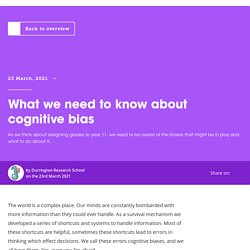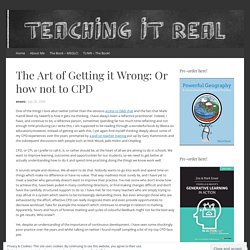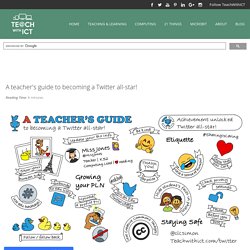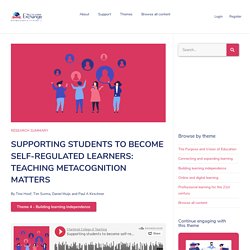

What we need to know about cognitive bias. The world is a complex place.

Our minds are constantly bombarded with more information than they could ever handle. As a survival mechanism we developed a series of shortcuts and systems to handle information. Most of these shortcuts are helpful, sometimes these shortcuts lead to errors in thinking which effect decisions. We call these errors cognitive biases, and we all have them. An Annotated Forgetting Curve. Just last month I finally completed and published The Coach’s Guide to Teaching; this month I’m wrapping up the manuscript to the new 3.0 version of Teach Like a Champion.

One of its themes of 3.0 is making clearer and more extensive connections to research so one thing the two books will have in common is discussion of the importance of forgetting–Retrieval Practice is a new technique in 3.0 and the role of forgetting for athletes is the subject of chapter 2 in CGT. As a result, both books discuss the ‘Forgetting Curve,’ the graph describing how learners forget things over time and how retrieval practice can arrest this process. The original Forgetting Curve was derived in the 1880s by the German psychologist Hermann Ebbinghaus and plotted the actual rate at which he was able to remember a series of nonsense syllables after learning them. The general shape of the curve is broadly accepted by cognitive psychologists.
And then a clean version: Done is better than perfect — Mary Myatt Learning. ‘Done is better than perfect.

I have tried to embrace this motto and let go of unattainable standards. Aiming for perfection causes frustration at best and paralysis at worst.’ Constructivism is a theory of learning, not a theory of pedagogy. Neuroscienc... Unsurprisingly, teachers are very interested in the brain, and excited about the potential for psychology and neuroscience evidence to be used in improving what they do (see for example the responses to this survey).

It’s a shame, then, that so little time in many teacher training routes has traditionally been given over to psychology and the science of learning. Especially if you trained five or more years ago (as I did), it seems to have been very rare to have received more than a cursory introduction to the subject… apart from one notable exception. However little psychology gets covered otherwise, one mandatory inclusion on many teacher training courses is constructivism — the idea that every individual constructs their own understanding and knowledge of the world, based on their own unique experiences.
Some of the misapplications of constructivism to pedagogy have been well documented before. The Art of Getting it Wrong: Or how not to CPD. One of the things I love abut twitter (other than the obvious access to D&D chat and the fact that Mark Hamill liked my tweet!!)

Is how it gets me thinking. I have always been a reflective practitioner. Indeed, I have, and continue to be, a reflective person, sometimes spending far too much time reflecting and not enough time producing (as I write this, I am supposed to be reading through a wonderful book by Biesta on education).However, instead of getting on with this, I yet again find myself thinking deeply about some of my CPD experiences over the years, prompted by a poll on teacher training put up by Gary Hammonds and the subsequent discussions with people such as Nick Wood, Jade Hickin and CKeeling. A teacher's guide to becoming a Twitter all-star! - teachwithict.com.
A teacher's guide to becoming a Twitter all-star!

Reading Time: 8 minutes. For me, Twitter is a powerful educational tool, not only because it allows me to connect with other educational professionals and expand my ever-growing PLN (Personal Learning Network), but because it also provides me an opportunity to reflect and question my own teaching practice. How can I make homework effective? – Dr C's Science Classroom. I have always been a bit rubbish with setting and assessing homework.

There have been times when I have set ambitious long answer-style question booklets but then couldn’t bring myself to mark any of it and I didn’t have the time in lessons to go through them so students could self assess either. I have set takeaway menu-style homework, which was such a waste of time for the students and myself because no one ever learnt anything (I did get a lot of yummy cakes but not so great for my waistline). More recently, I have been setting SLOP and interleaved questions from the booklets I have been using. While I think this was much better than my track record of disastrous and pointless homework pieces, I need to put more thought into which questions I set and whether they will help my students long term.
Why do I want to set homework? Supporting students to become self-regulated learners: Teaching metacognition matters – theeducation.exchange. Skip to content Close Menu Would love your thoughts, please comment.x.

Knowledge Organisers – A Failed Revolution – Sam Hall. A young apprentice, tired of having to carry pails of water, enchants a broom to complete the task for him.

An ingenious solution, until the apprentice realises his new tool is out of control. Soon enough, the broom has multiplied exponentially. Clear Teacher Explanations 2f: Dual Coding Mistakes. As dual coding becomes more popular, its definition also expands.

This post intends to clarify the difference between dual coding and graphic design. The key idea is that aesthetically pleasing diagrams do not necessarily translate into better learning. If teachers invest time adding lots of diagrams to their resources with the mistaken belief that it adds value to learning, then I think ‘dual coding’ has morphed into something it shouldn’t have. I often see teachers make worksheets with the following dual-coding mistakes which, though well-intentioned, do not reap the intended benefits: